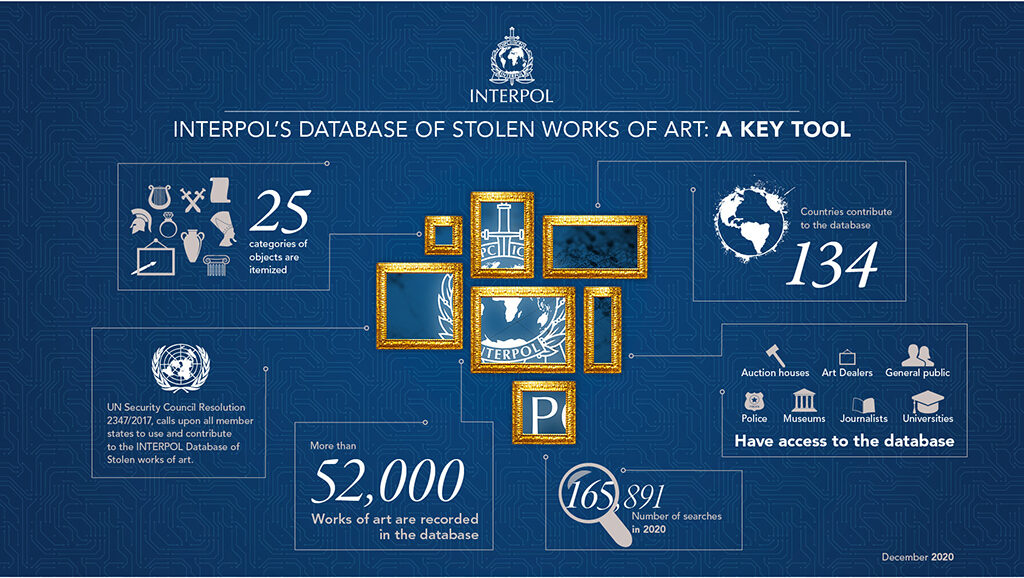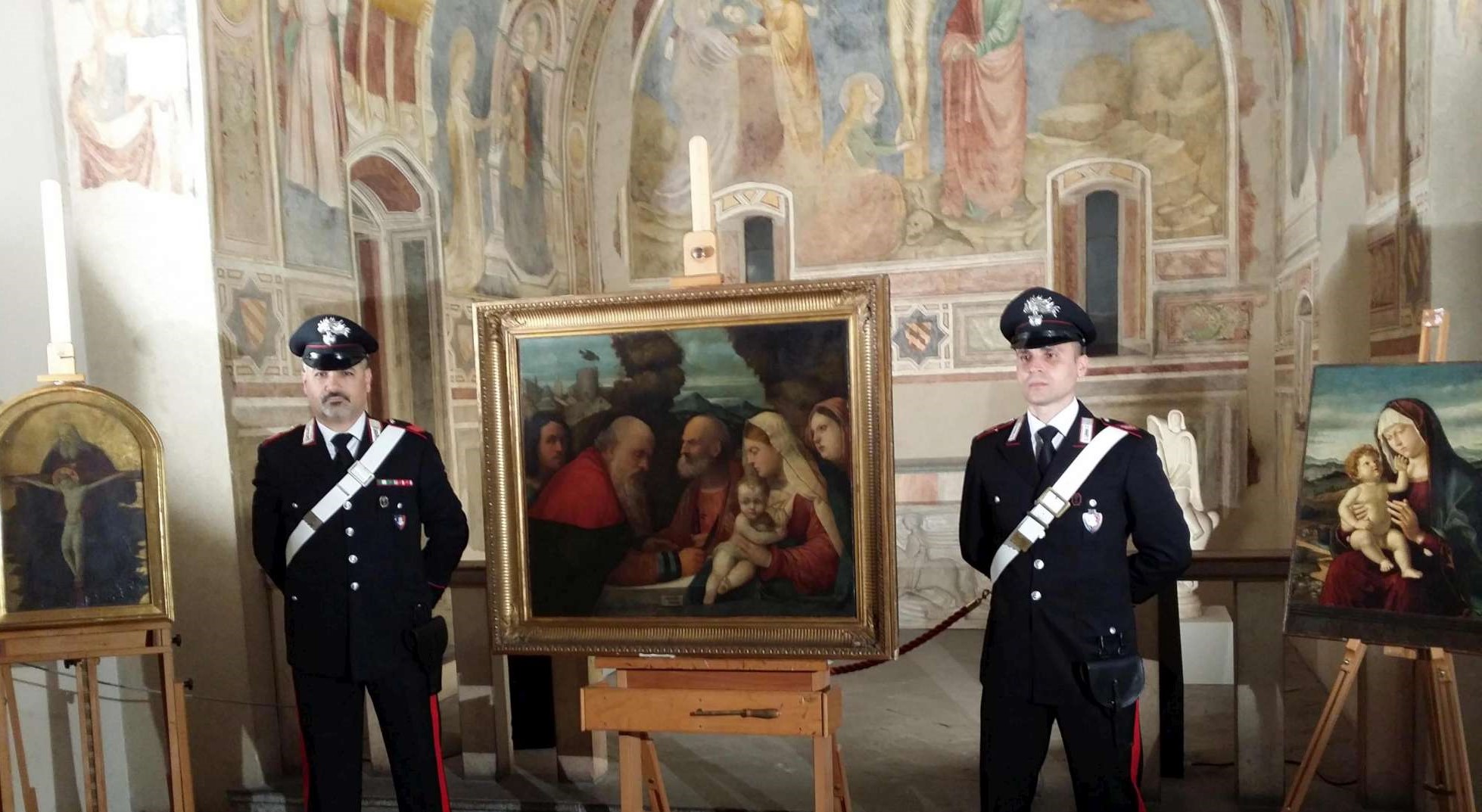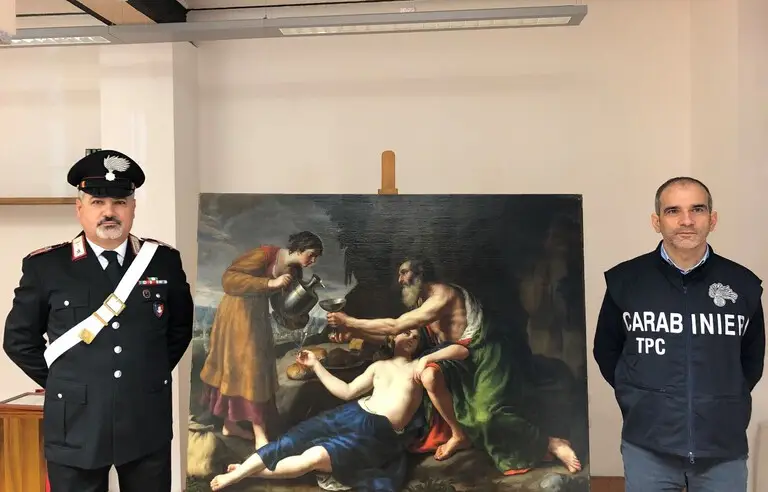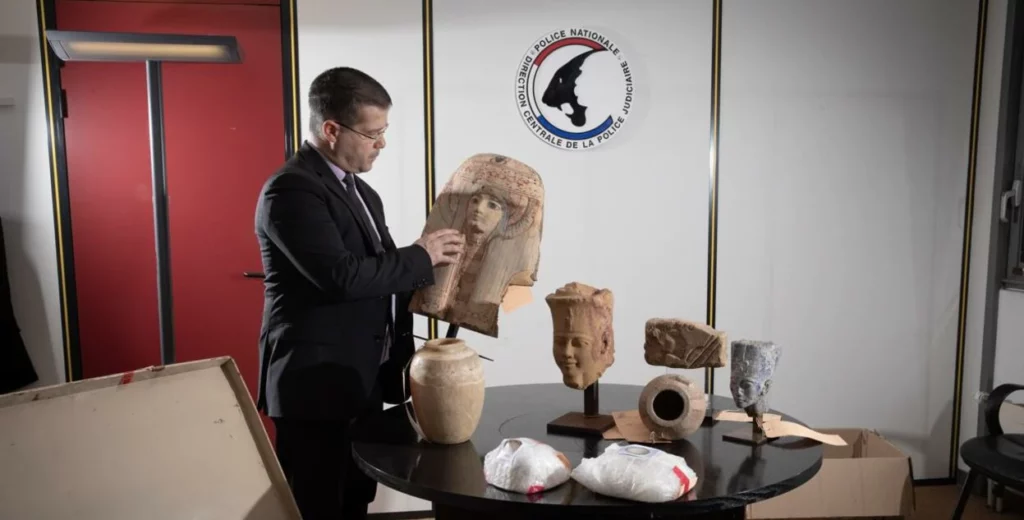What are the most widely stolen cultural objects in the world?
Works of art from private homes account for the largest share of thefts and trade on illegal networks. Museums and places of worship are often the focus of art trafficking.
Furthermore, counterfeits are constantly flooding the cultural market and require careful regulation and control to identify fake artworks in circulation.
In 2020, anti-trafficking authorities seized 854,742 cultural objects worldwide, including collectibles, paintings, sculptures, artefacts and library material. More than half of these objects (567,465 to be exact) were seized in Europe, demonstrating the effectiveness of European police units specialising in cultural property crime (source Interpol).
How can we protect cultural heritage today?
Protecting heritage necessarily involves strengthening the means available to fight against cultural goods trafficking.
For policies to be truly effective, close collaboration between national and international organisations and local and regional stakeholders is needed to promote and protect cultural heritage.
“Traditional” solutions held by cultural organisations
- The first step is to prevent re-stocking on the black market by focusing on the prevention of art theft. Useful measures include:
- Protecting the premises where art collections are held
- Collections inventory: identifying the works of art to facilitate potential investigations in case of theft. This is done through photographs, precise descriptions and specific markings to authenticate every object.
- The second step is to ensure protection measures apply in a transactional framework. Indeed purchase procedures must meet specific criteria in the art market:
- No purchase if the origin, source and authenticity of the material cannot be verified
- Working with experts to identify potentially fake works of art
- And the final step is to implement a clear notification procedure to alert authorities of illicit art trafficking in case of theft:
- Immediate theft reporting by museums or individuals to the police and heritage protection authorities: you can support the investigation by providing a full list of stolen objects along with detailed photographs.
- You can also use national and international databases such as INTERPOL’s Stolen Works of Art Database to monitor all objects currently in circulation.
Technological solutions to support investigative work
Faced with the rising threat of theft by increasingly powerful criminal networks, organisations must develop new and effective tools to support local investigations.
• PSYCHE (Protection System For Cultural Heritage)
With its PSYCHE project in 2018, INTERPOL aimed to modernise and improve its Stolen Works of Art Database. Data on stolen objects is no longer updated by the INTERPOL General Secretariat but by relevant services in every country (photo, detailed description).
Exchange of information as well as international cooperation have expanded the database, thus increasing the chances of recovering cultural heritage. The PSYCHE project was initially managed by the Carabinieri, who are responsible for heritage protection in Italy.
• INTERPOL’s database of stolen works of art
The most effective tool on a global scale is INTERPOL’s Stolen Works of Art Database, which contains records of more than 52,000 objects from 134 countries.
In May 2021 INTERPOL launched the ID-Art mobile app, which provides mobile access to INTERPOL’s database for the general public, and allows for the creation of private art collection catalogues as well as reporting of cultural sites under threat.
For instance, following a tip-off from a London numismatist, Spanish police located and arrested two individuals as they attempted to sell an ancient coin of great historical and economic interest. A total of three gold coins dating from the Roman Empire – with a potential street value of €200,000 – were recovered. The investigators used ID-Art to authenticate these items, which originated from a batch stolen in Switzerland in 2012.
Similarly, a 13th-century processional cross stolen in 2016 from the Evangelical Church of Romania Museum in Cisnădie, Transylvania, was recovered by Romanian police in July 2021 and returned to the parish. Using ID-Art, investigators identified the object in INTERPOL’s Stolen Works of Art Database.
INTERPOL’s international efforts will require close partnerships with other cultural organisations and national law enforcement agencies. These include:

- Europol at European level
- The International Centre for the Study of the Preservation and Restoration of Cultural Property (ICCROM)
- The International Council of Museums (ICOM)
- The International Institute for the Unification of Private Law (UNIDROIT)
- The Organization for Security and Co-operation in Europe (OSCE)
- The United Nations Educational, Scientific and Cultural Organization (UNESCO)
- The World Customs Organization (WCO)
• And at national level?
Every country has its own internal organisation in cooperation with international bodies.
Here are two examples of such national organisations
- In France, the Office central de lutte contre le trafic de biens culturels (OCBC – French Central Office for the Fight against Trafficking in Cultural Goods) carries out its investigations by using the French TREIMA database (Thésaurus de recherche électronique et d’imagerie en matière artistique – Electronic search and fine-art images thesaurus), which in turn feeds INTERPOL’s PSYCHE database.
- In Italy, the Carabinieri operate a dedicated service called Comando Carabinieri per la Tutela del Patrimonio Culturale (TPC – Carabinieri Command for the Protection of Cultural Heritage), which is the first division in the world created for this purpose. It involves more than 300 police officers across 15 cities, formally trained in the art market. The TCP feeds the database on stolen works (more than 1,300,000 objects under investigation, 800,000 images and 8 million item descriptions).
The results of the Italian investigations are promising: 1,8 million objects have already been recovered since the TPC’s creation. In 2020, it recovered nearly 484,000 objects worth over €33 million.
What are the key challenges for technology solutions used by government organisations?
To ensure effectiveness of government policies for the protection of the art market, appointed organisations must leverage the power of new technologies to support their investigative work in the field.
However the security of these tools is paramount. Governments must pay attention to criteria such as:
- Compatibility of the solution with their own product environment. Every organisation has its own technological environment and the tools it uses must operate under a dedicated licence rather than an SaaS.
- Data privacy at judiciary level. A delicate balance must be maintained between the information fed into INTERPOL’s database (which is public) and the investigative elements.
- Technological sovereignty. The state organisation must be able to use the service over time without being dependent on the company developing and marketing the technology.
- Affordability. The solution must contribute to limiting inventory costs, reducing input errors and facilitating investigations on stolen works.
LTU technology and computer vision in the fight against stolen art and criminal organisations
The computer vision provided by LTU technology is fully in line with this approach to help government organisations and has already proven highly effective over 20 years of optimisation.
LTU technology is a visual recognition technology that relies on visual features.
Different algorithms will analyze the image and process the object’s characteristics without resorting to deep learning models. Indeed, each object or image has its own graphic signature, called unique signature or DNA. This unique signature allows LTU to recognize each image in record time.
As pictures are better than words, we explain everything in video:
CONCLUSION
Native visual recognition technology has made encouraging progress when it comes to protecting cultural heritage, and has proven highly effective in protecting and recovering heritage.
At LTU Tech, we strive to help state organisations with world-class technology. Our expertise and tools aim to support authorities in their investigation work to protect cultural heritage.

Indeed the Carabinieri were looking for an image and object processing technology stack to integrate into their existing product environment.
Because every piece of art is unique, they must rely on native technologies such as LTU’s signature visual recognition tool to support their investigation work, and search their own database to cross-reference any newly found artwork.
With LTU’s signature visual recognition technology, which is available as on-site licence, the Carabinieri can use algorithms that recognise artworks instantly and with high reliability without supervising the training of a deep learning model.



